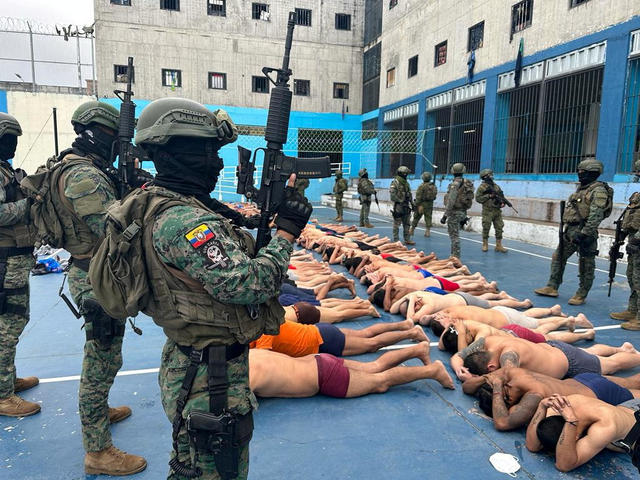Once known as an “island of peace,” Ecuador has descended into seemingly irreparable violence. In 2023 alone, the police recorded a striking 8,000 deaths in Ecuador, which was eight times more than the number of deaths recorded in 2018. Ecuador’s recent homicide rate greatly surpasses those of Brazil, Colombia, and Mexico—in fact, Ecuador currently has the highest murder rate in all of Latin America.
How did Ecuador arrive at this grim statistic? Acknowledging the trend of mass incarceration around the world, Ecuador took a different approach by decriminalizing gangs entirely in 2007. The government permitted gangs to register gangs under the status of “cultural groups” that actually bolstered a civil society presence and contributed to the communal value of their country. Gangs could receive grants and reap the benefits of social programming services.
Shockingly, decriminalization initially worked. Murder rates fell from 15.35 per 100,000 people in 2011 to 5 per 100,000 people in 2017. The government set aside a fund for social and cultural events for the gangs to promote well-being and created a grant for job training activities. By investing in the groups themselves, the new policy resulted in a positive response in higher community involvement and overall lower crime rates.
But this period of peace quickly unraveled when President Lenín Moreno took office in 2017. Moreno declared himself a “revolutionary,” and he lived up to the name—but in all the wrong ways. He made it a goal to spread populist rhetoric across the continent, returned to the International Monetary Fund (IMF) as a source of funding, and pushed the country into a possible recession. In 2019, Ecuador borrowed $4.2 billion from the IMF under a reform program intended to modernize Ecuador’s economy and pave the way for sustainable growth. The program planned to tighten Ecuador’s budget by 6%. To meet this benchmark, Ecuador had to raise taxes dramatically, cut public infrastructure projects, and leave many public sector workers jobless. Since these provisions impact low-income populations the most, wealth disparities and inequality gaps widened, compounded with the fact that Ecuador now owes the IMF $7.69 billion. As people struggle in these poor economic conditions, a state of constant insecurity and violence arises across the country.
Moreno failed to give the onset of violence the attention it deserved, essentially ignoring the problem in the early stages. Daniel Pontón, a university professor at Ecuador’s Institute of Higher National Studies, reflects that “Moreno never took the massacres seriously. There was never a decisive intervention. In fact, during the pandemic, prison budgets were cut.”
With most of the country entrenched in poverty compounded with the lenient gang legislation, gang violence spiked. In one particularly tense moment, armed gang members stormed a television studio during a live broadcast, leading Daniel Noboa, Ecuador’s president since 2023, to order gangs to be “neutralized.” The homicide rate has grown by 500% since 2016, reaching 45 murders per 100,000 citizens.
Yet though the situation has deteriorated over the past few years, the question remains as to why Ecuador’s gang legalization seemed to work when first implemented. The truth is that policies are never “one size fits all.” Domestic politics and the internal foundations of the country will always dictate a policy’s effectiveness—the fact that the policy worked in another country isn’t necessarily enough evidence that it will work in another. Thus, decriminalization seemed impossible in other countries. Ecuador, however, recognizes gangs as socio-political actors. Former President Correa even goes as far as to say that Ecuadorian society “needs them and [they] will have the full backing of the government.”
Through the lens of social psychological responses, Ecuador associates safety with civic engagement. Civic engagement, in this context, encapsulates a personal investment in the community. Engagement could range from participation in community-driven events, or investing financially in community directives. An increase in civic engagement—possibly through the presence of social gangs—will cause the community to eventually self-regulate. If there is more community involvement and civic participation, the community is more likely to trust each other. Therefore, people are more likely to invest in the community and the institution that they trust, whether that be through safety procedures or access to mental health resources. People will ultimately be less likely to resort to violence if there are consistent pillars of society to depend on and members of the community that they trust.
If there exists a sense of structural inequalities within the community where the differences between groups are blatant, people will resort to “othering” groups within the community, which can result in responsive gang violence. In the context of Ecuador, the “othering” of gangs would only bring violence amongst Ecuadorians. Thus, by widening the social safety net to all groups, including gangs, the government provides a safeguard without having to resort to coercion.
By understanding this social element, it makes sense why this legislation would work in the case of Ecuador. This policy measure has to be handled with fragility, its effectiveness depends on consistent government efforts. The escalation of violence, with the Moreno administration, revealed how much the failures of governmental attention can result in devastating violence. Time will tell if Ecuador can salvage the peaceful reign it once had.
Featured Image Source: CBS News






Comments are closed.